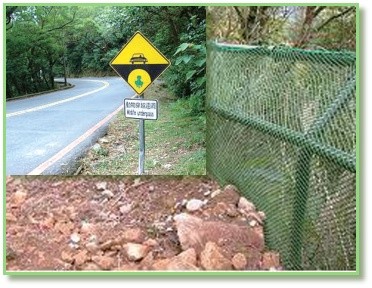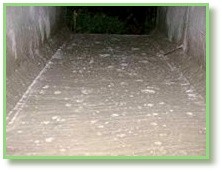Exploitation by humankind has changed the Earth’s ecology drastically, driving many living species toward extinction. The change is attributable to two main factors: road construction, which divides or fragments animal habitats; and the impact of human activities on animal migration routes. The government of Formosa deserves commendation for its recent enactment of two measures aiming to reduce traffic hazards to animals in migration or while engaged in other activities. Beautiful Concession
In late March and early April each year, Purple Crow butterflies in Formosa migrate to the north. To prevent them from being hit by vehicles on the highway, a conservation group formed by specialists launched an urgent rescue operation. In an unprecedented step, the National Freeway Bureau cordoned off the outer lane along sections of the highway and set up safety nets to force migrating butterflies to fly higher and avoid the traffic. Conservationists also installed ultraviolet lamps beneath highway bridges to attract butterflies toward the light and guide them on their flight under the bridges. Coincidentally, the Associated Press recently reported a similar measure taken by the US Bureau of Land Management to save Sand Mountain blue butterflies from extinction. Dozens of off-road vehicle trails over 15 sq. km were closed in Nevada, leaving only major routes open to traffic. Animal Underpasses in Yangmingshan National Park Over a thousand wild animals were killed by cars each year when trying to cross the road in Yangmingshan National Park in suburban Taipei. The Park Authority then constructed several “animal underpasses” to reduce such traffic accidents. “Building animal passageways is a way of showing our respect for animals. When making plans for convenient human transportation, we also consider animals and their travel routes as we do not want to hurt them,” said Superintendent Guo Bu-yun of the Park Authority. But how can animals be guided to use the underpasses? The Park Authority sets up screens parallel to the road to guide animals into culverts, which are shielded by vegetative covers to make them look natural and hidden. Food is also used to lure animals into the culverts until they become a habitual route. The floor of the culverts is intentionally roughened to make movement easier for reptiles. These environmentally friendly animal passageways were designed by Huang Guang-ying. Out of personal interest and respect for life, he has conducted long-term research on animal behavior to identify the causes of animal accidents, and subsequently came up with appropriate solutions to greatly reduce such accidents. Dr. Huang said that the key to success is to empathize with animals. “Think from the standpoint of animals, then you can come up with the perfect designs,” he said. The government has received widespread
acclaim for undertaking measures with a respect for animals’
right to live.
| ||||||||||||||


